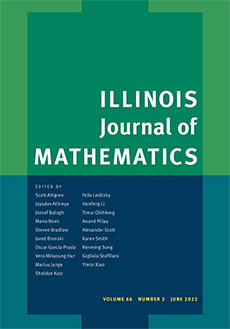Abstract
The aim of this paper is to motivate the development of a Brunn-Minkowski theory for minimal surfaces. In 1988, H. Rosenberg and E. Toubiana studied a sum operation for finite total curvature complete minimal surfaces in $\mathbb{R}^{3}$ and noticed that minimal hedgehogs of $\mathbb{R}^{3} $ constitute a real vector space [14]. In 1996, the author noticed that the square root of the area of minimal hedgehogs of $\mathbb{R}^{3}$ that are modelled on the closure of a connected open subset of $\mathbb{S}^{2}$ is a convex function of the support function [5]. In this paper, the author
(i) gives new geometric inequalities for minimal surfaces of $\mathbb{R}^{3}$;
(ii) studies the relation between support functions and Enneper-Weierstrass representations;
(iii) introduces and studies a new type of addition for minimal surfaces;
(iv) extends notions and techniques from the classical Brunn-Minkowski theory to minimal surfaces. Two characterizations of the catenoid among minimal hedgehogs are given.
Citation
Yves Martinez-Maure. "A Brunn-Minkowski theory for minimal surfaces." Illinois J. Math. 48 (2) 589 - 607, Summer 2004. https://doi.org/10.1215/ijm/1258138401
Information





